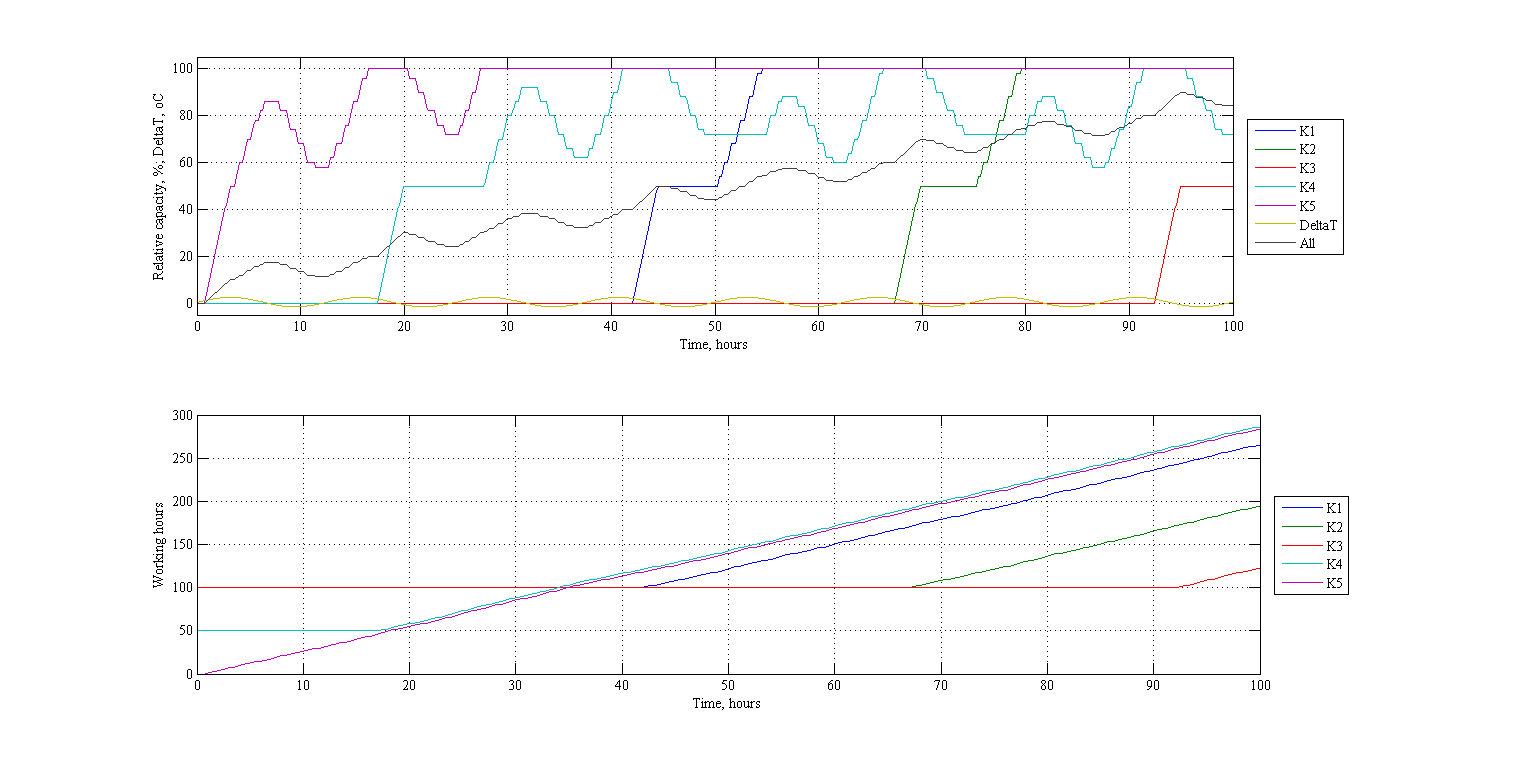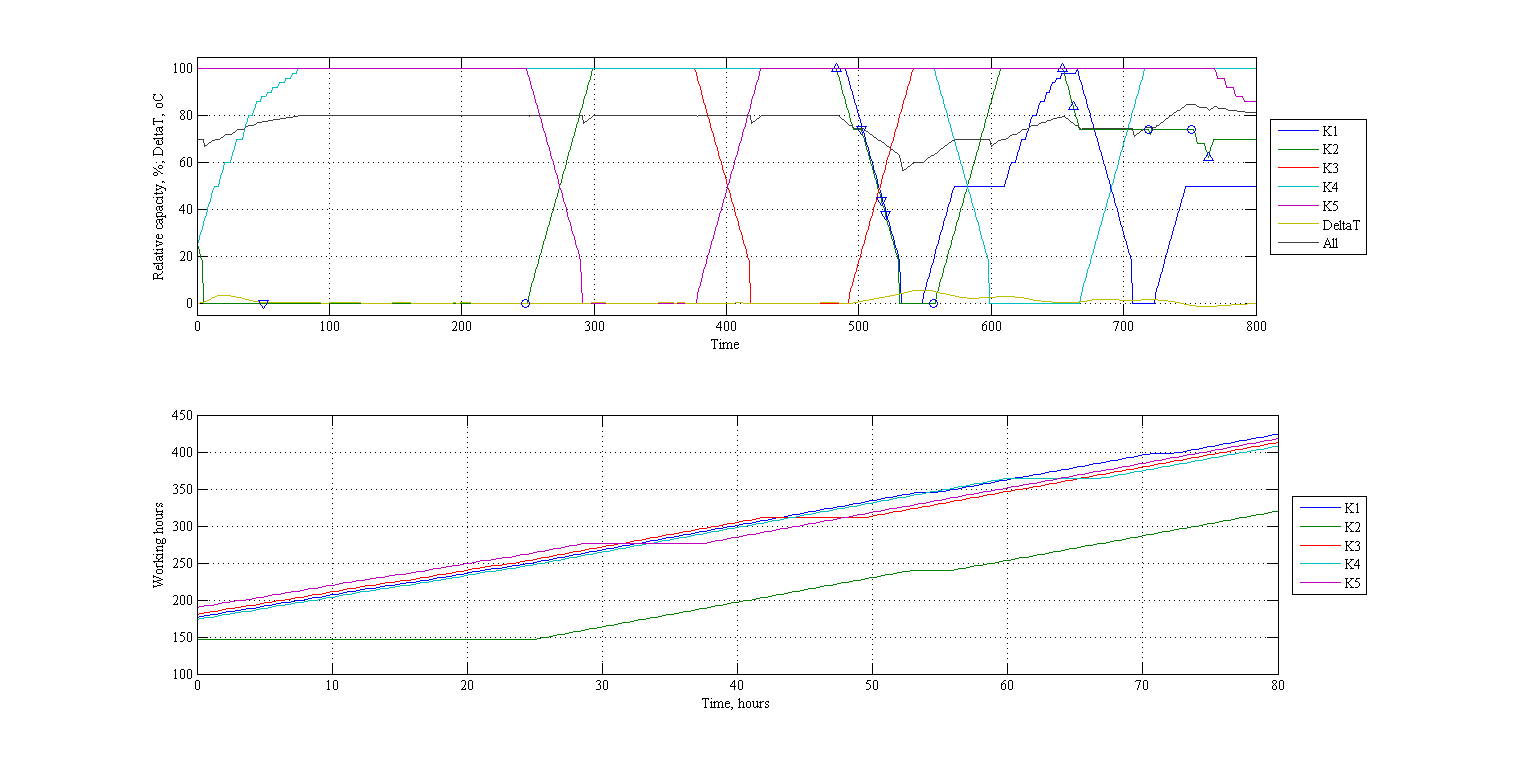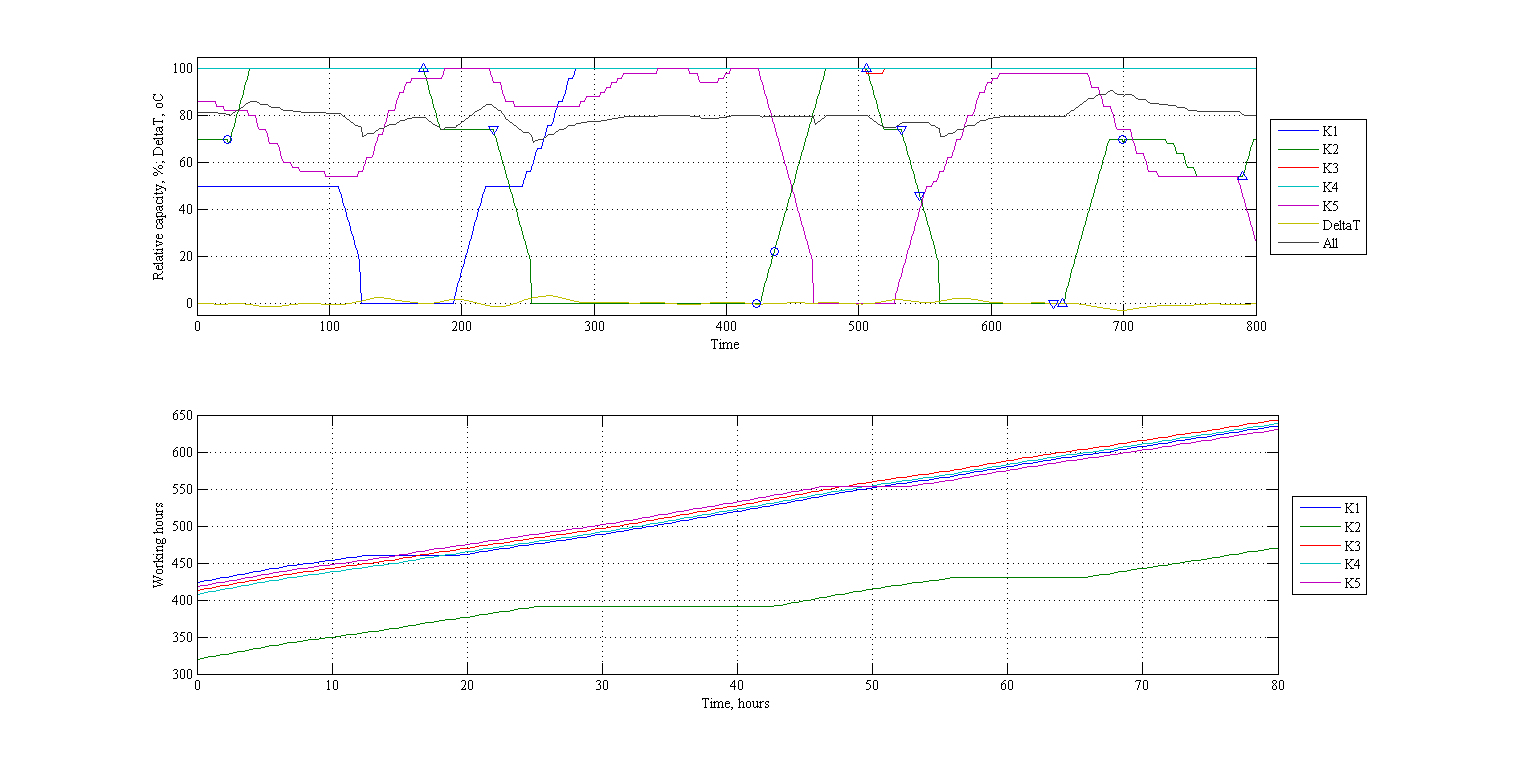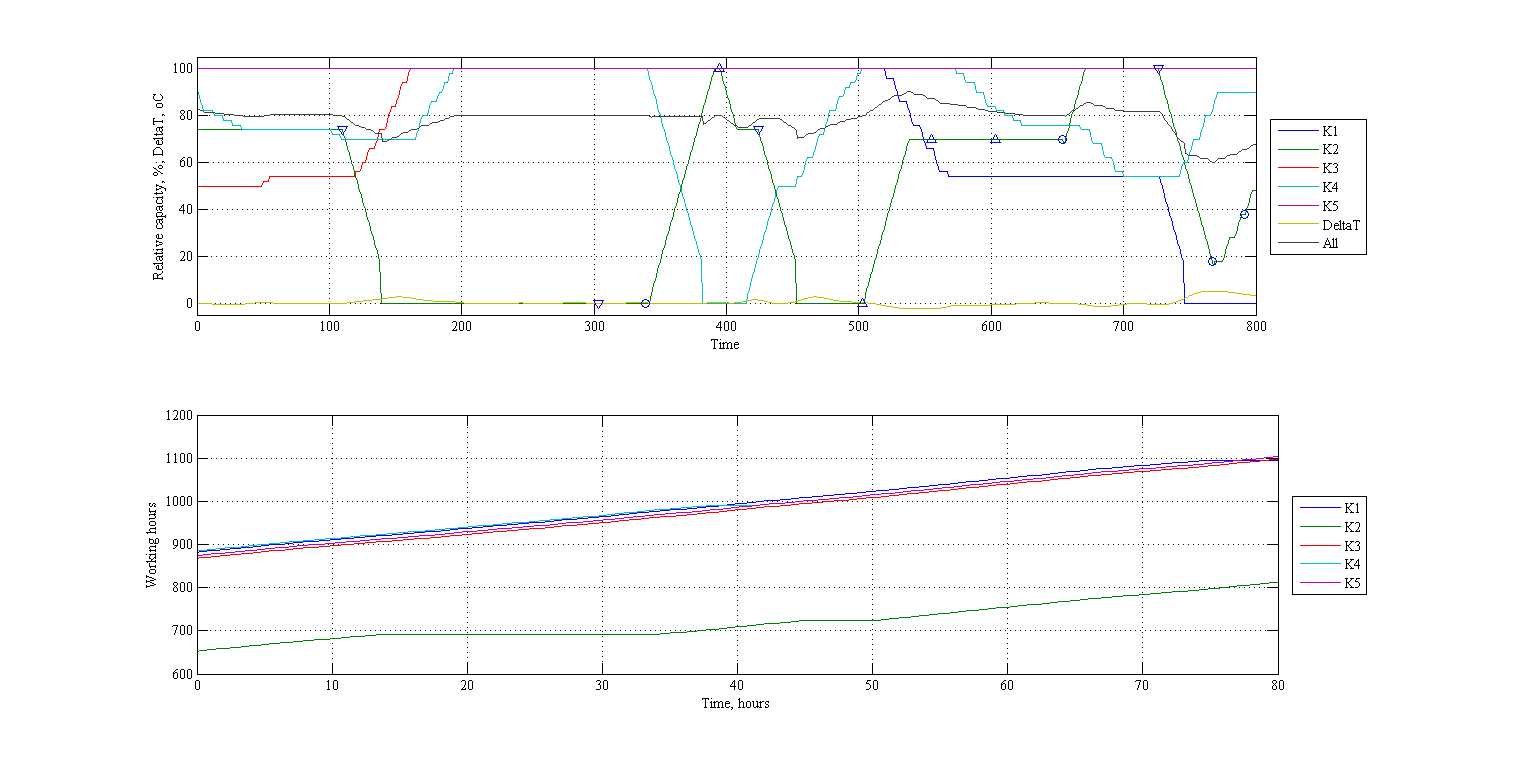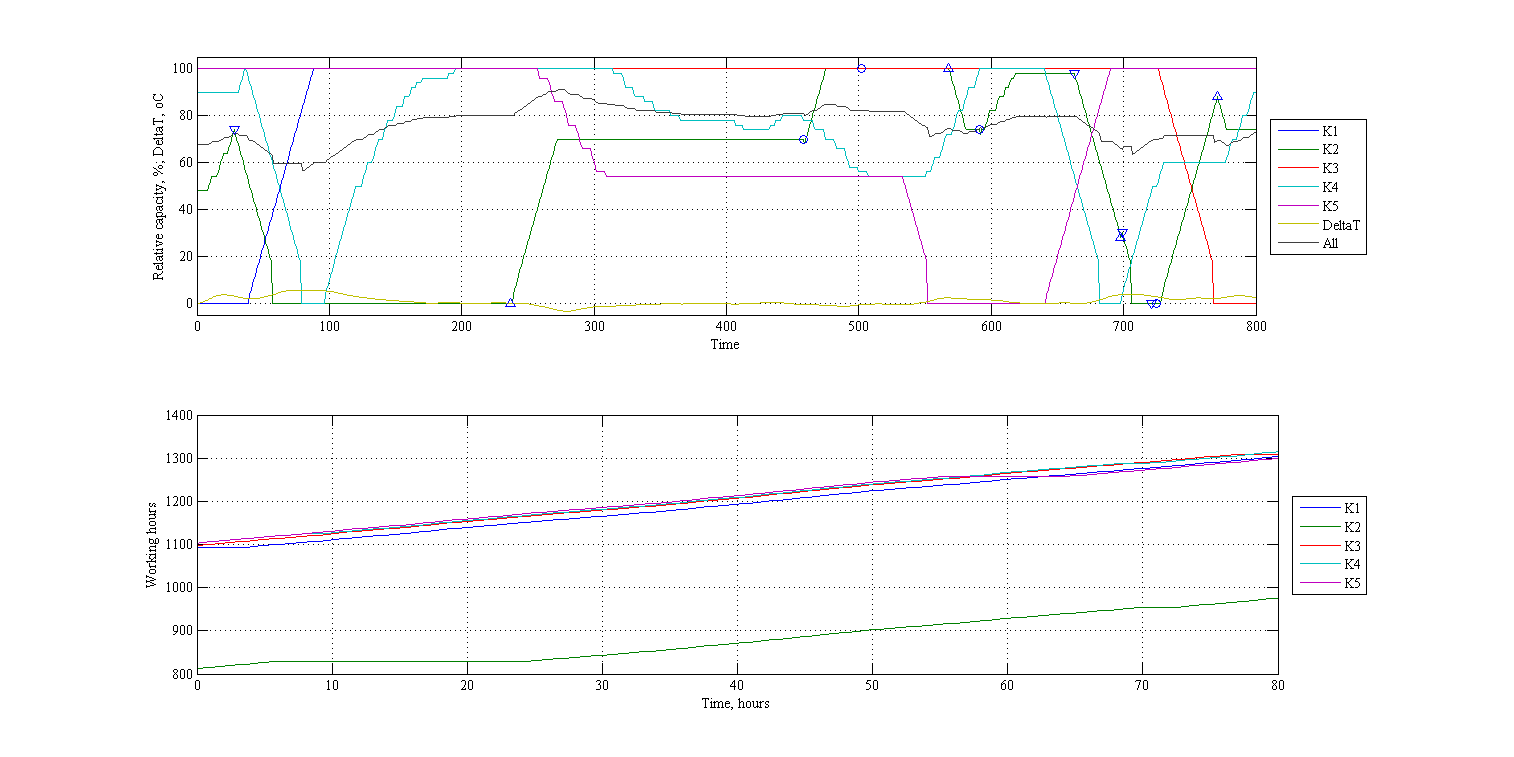Revision 03-Apr-2014.
To run the applet please install Java runtime
This Java applet illustrates the work of refrigeration compressor sequence algorithm, which has been developed by our company basing on several years of experience. In this example, there are four screw compressors with slide valve capacity regulation, and one screw compressor with frequency converter and slide. The algorithm can be easily extended to any number of compressors (cycle processing of arrays used), and for piston compressors with step capacity regulation.
The purpose of this algorithm is to optimally select which compressors should run and at what capacity, from the energy consumption and wear of mechanisms point of view, providing the sufficient accuracy of regulation. The following criteria have been used:
- Efficiency of screw compressor is low at small slide positions. For example, two compressors at middle capacity work better than one at maximum and another at minimum. So only if one compressor is running then capacity below middle is allowed (in auto mode).
- Efficiency of frequency converter regulation is high. Compressor works efficiently at minimal frequency and at maximal slide position.
- Uniform wear of mechanisms by equalizing the running hours. The algorithm also contains the warning about expiration of moto-resourse (service life) and approaching of maintenance deadline for each compressor, but in this applet the warning is not shown.
- Minimize the number of compressor starts and stops.
The features of this algorithm:
- Separate start and stop sequences. Start and stop priorities are set for each compressor. This, among other things, allows to take into consideration the power of compressors. For example, there is one big compressor and three small compressors. A small compressor starts first, because we don’t know what kind of load there will be – at small load a small compressor will work more efficiently. If more compressors are required, then the big one starts. If two compressors at middle capacity are too much, then a small one stops.
- Un-interrupting equalization of motor hours. Natural starts and stops, due to total capacity regulation, are used for equalization where possible. Interrupting equalization is also provided: forced stop-start compressors if the difference of hours exceeds the allowed limit (worked long without a natural start-stop).
- Pick-up running compressors when switching from manual to auto mode and vise versa.
For the convenience of testing, you can speed up all the delays by setting Time scale.
Below are the graphs generated during automated testing in Matlab environment.



